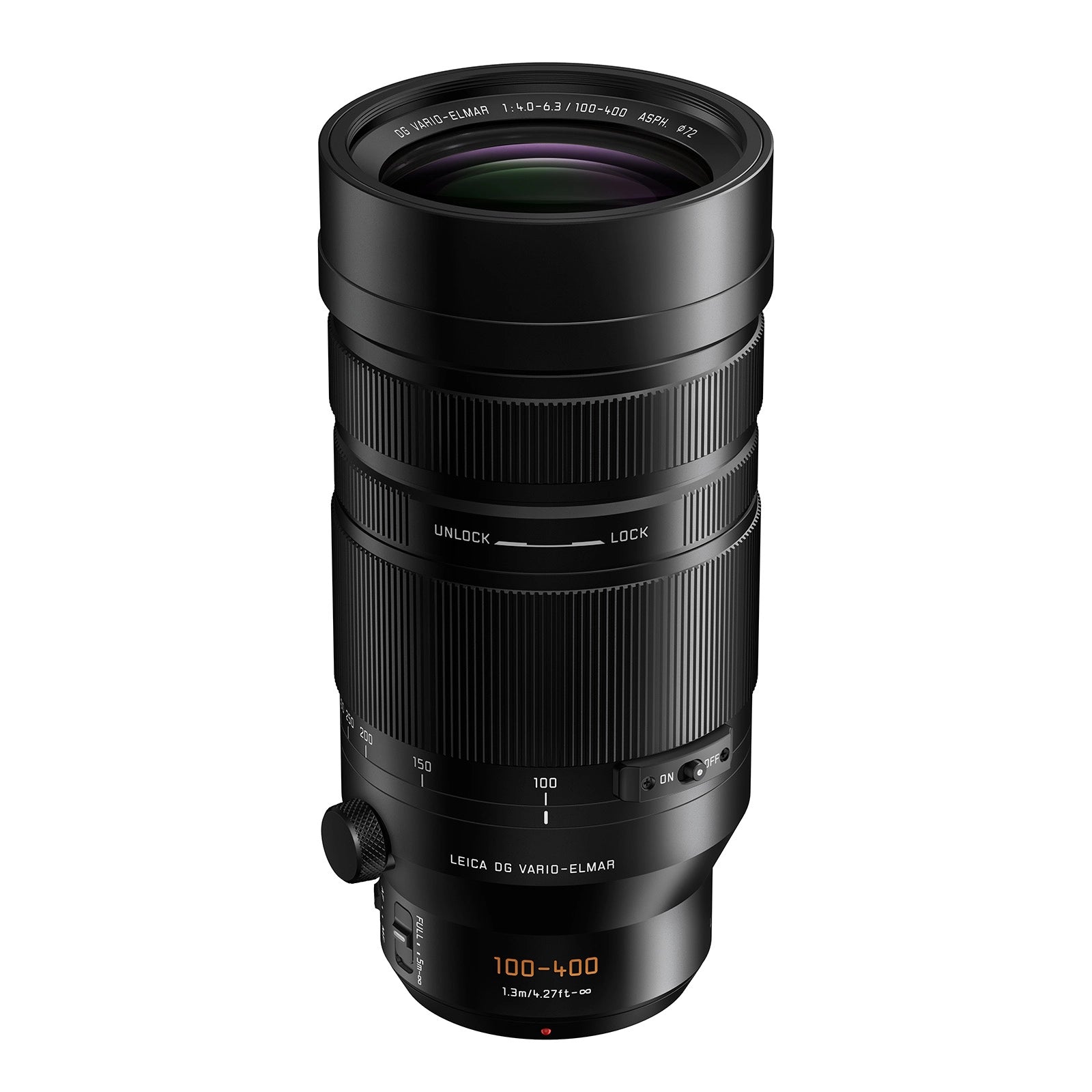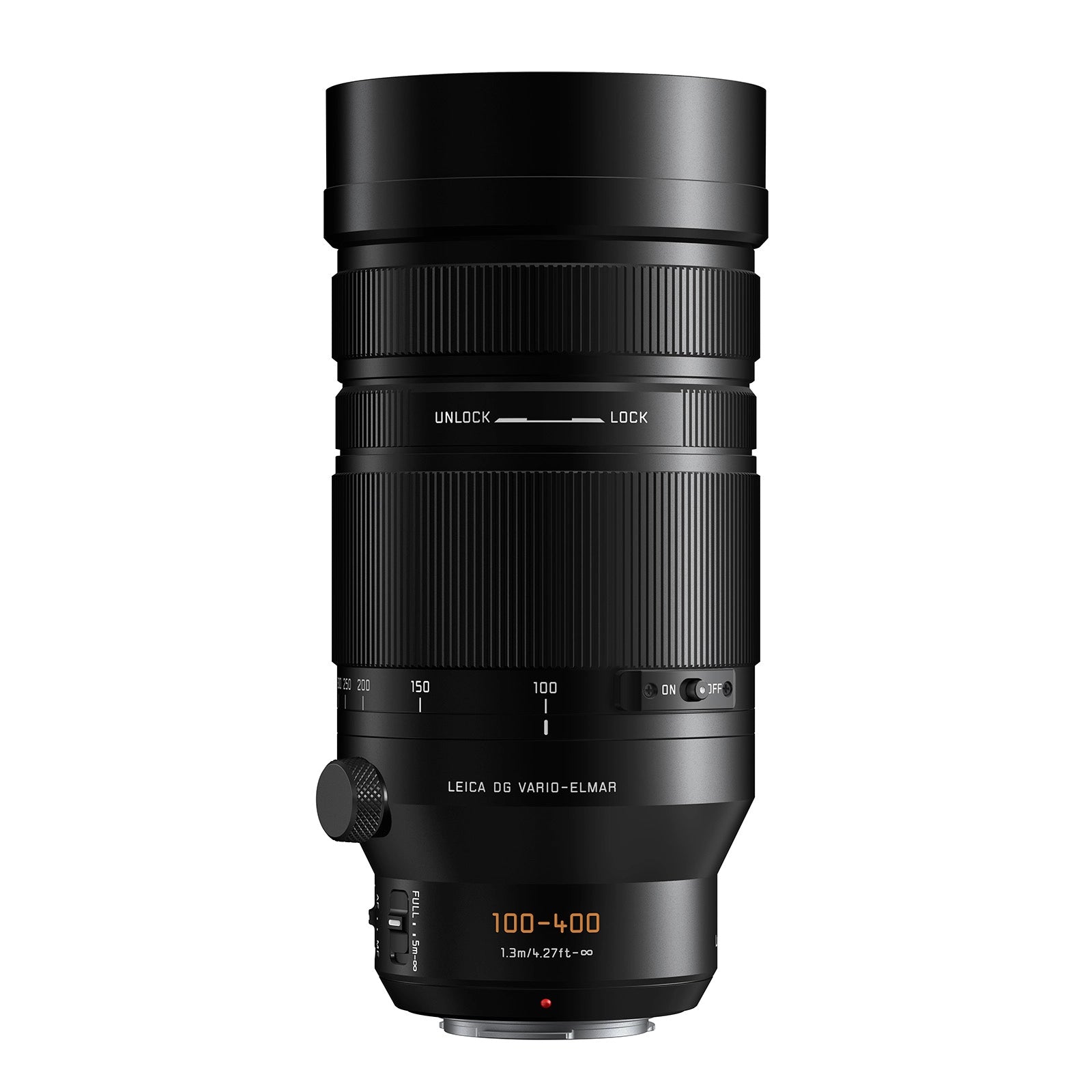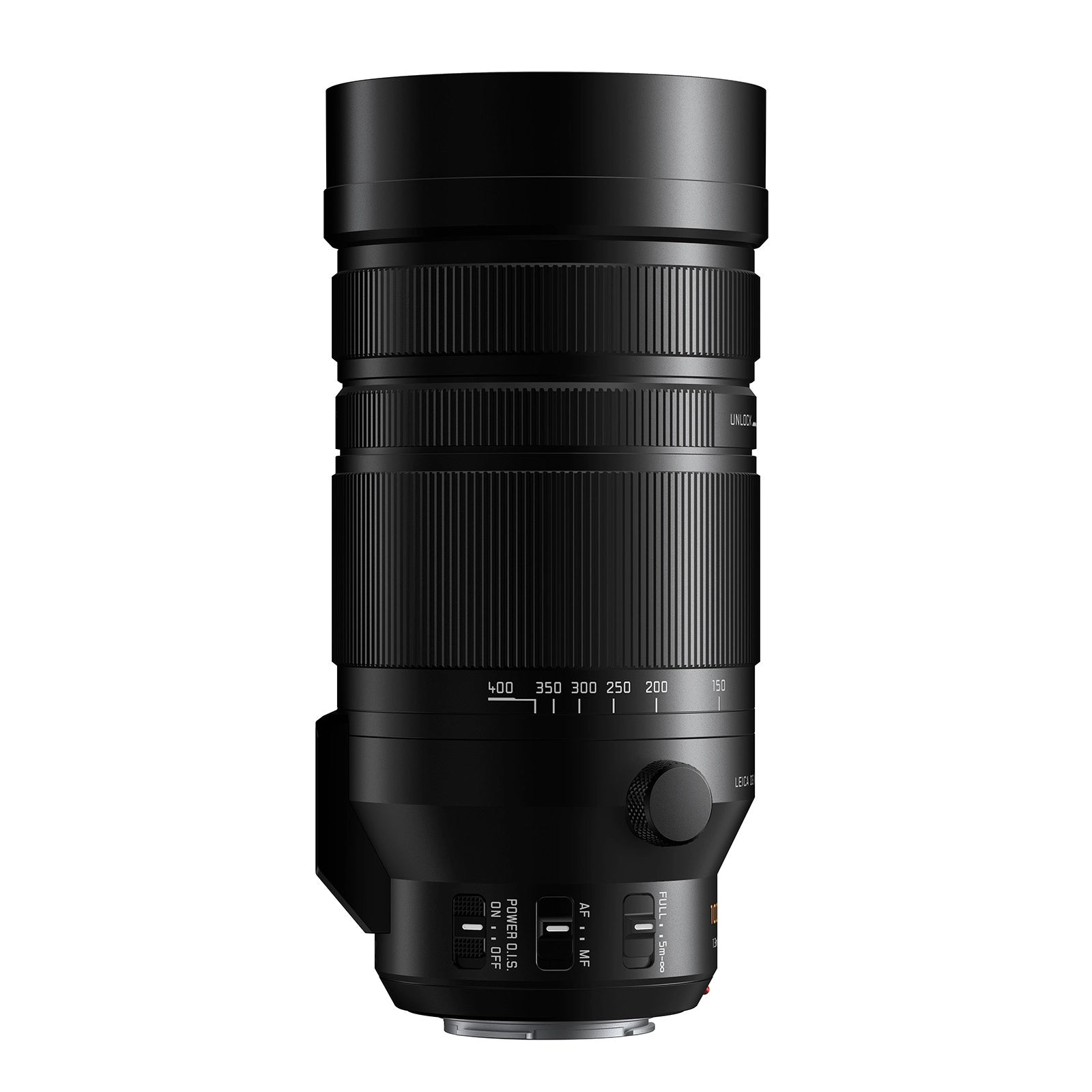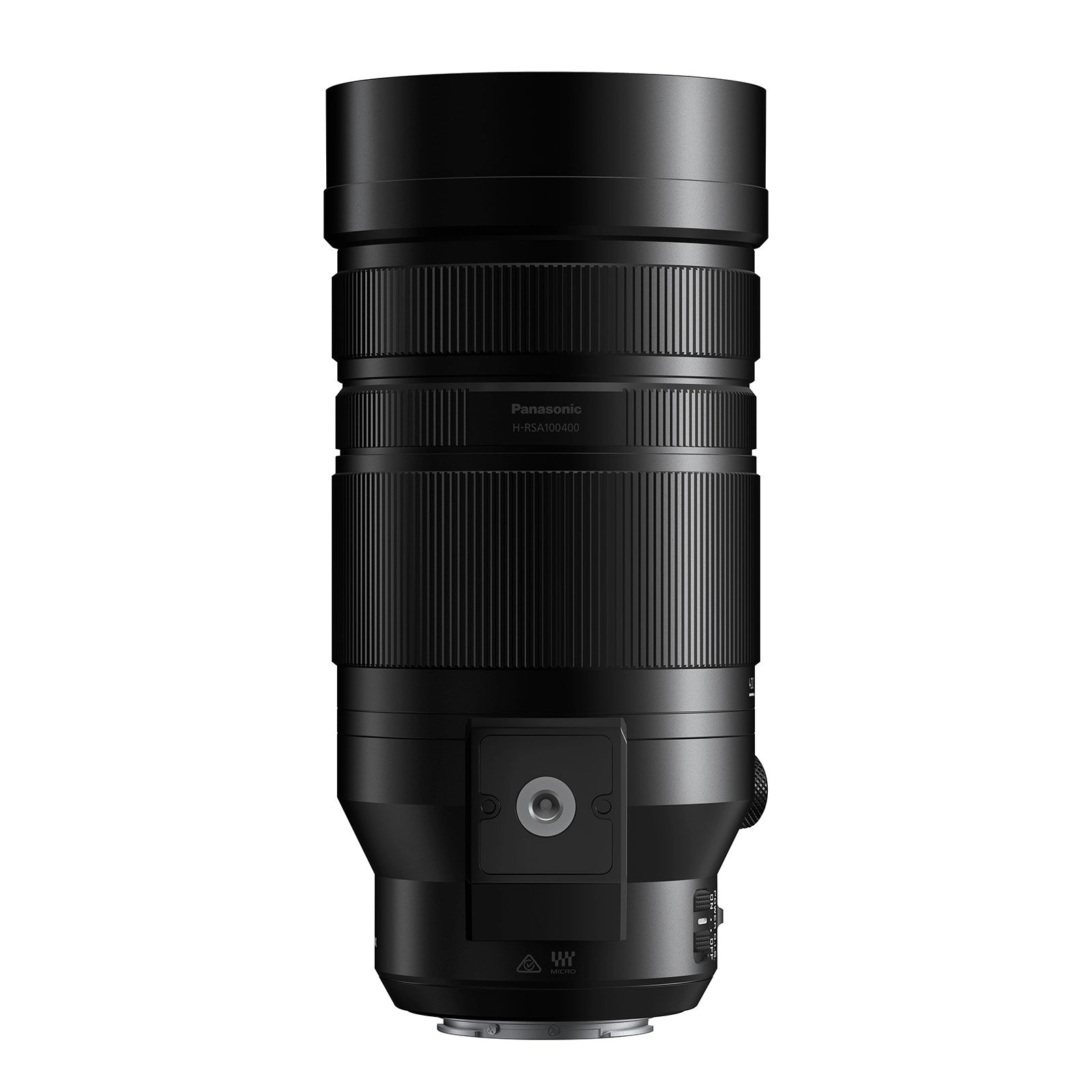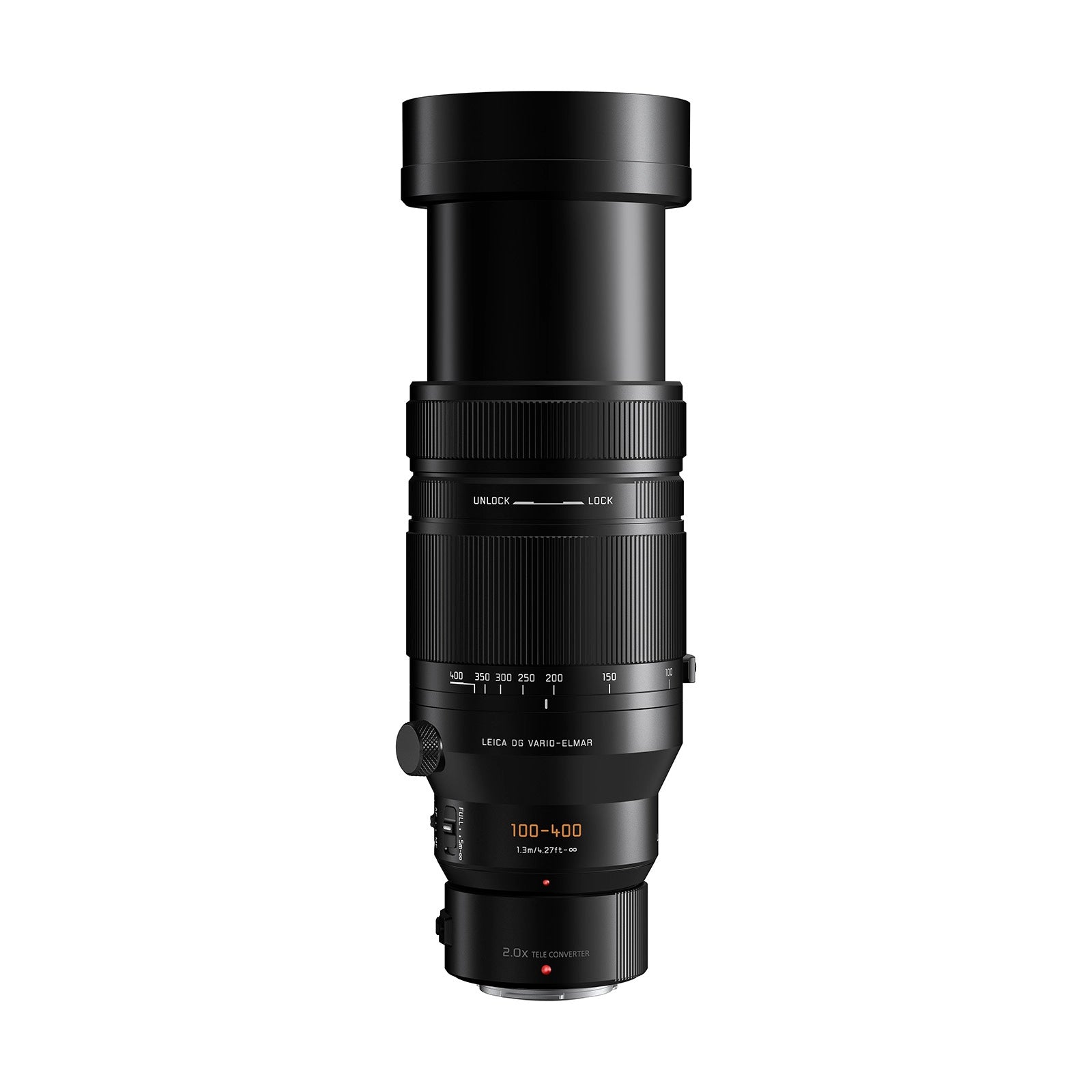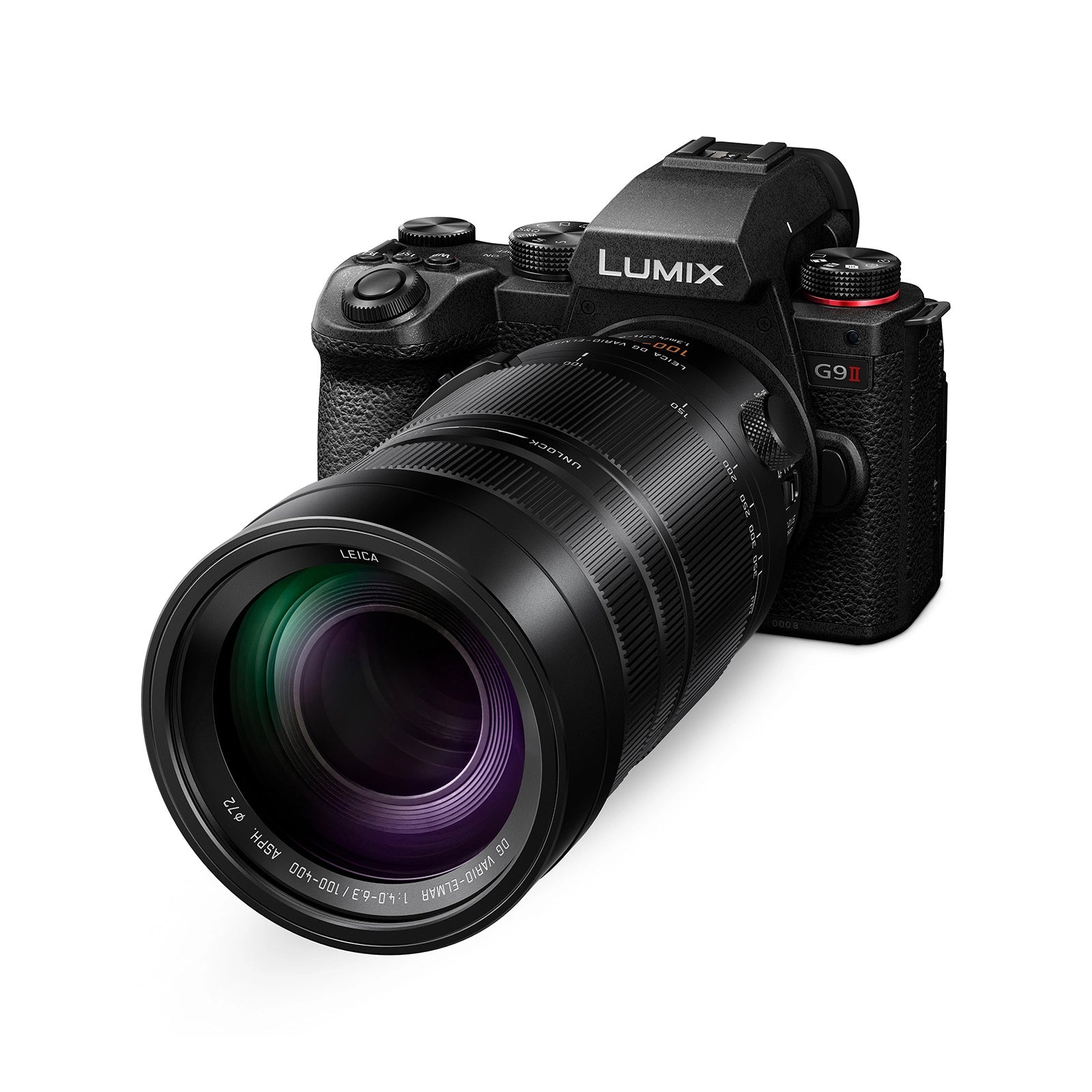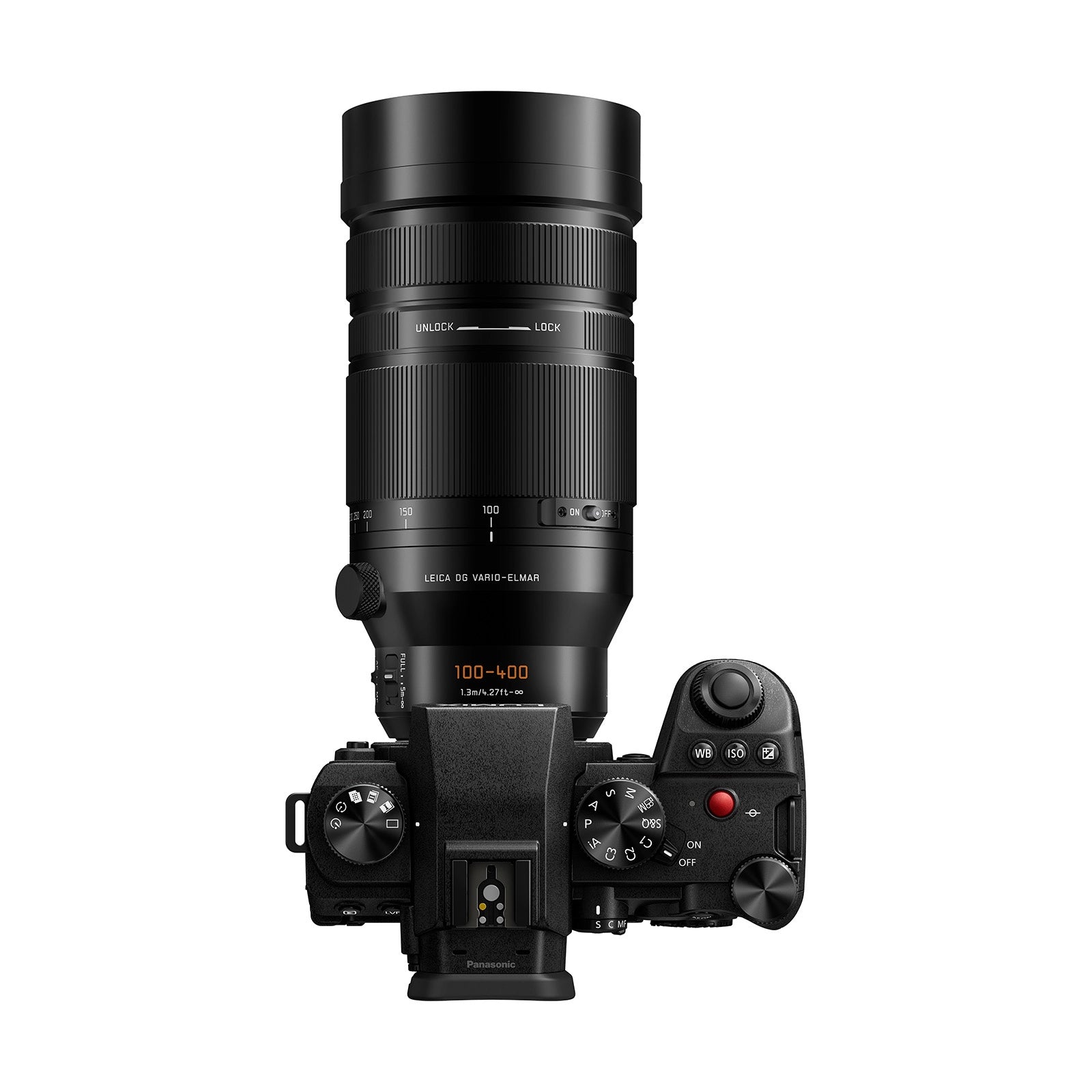Product Description
Panasonic Leica Elmar 100-400mm f/4-6.3 II ASPH Lens
New Teleconverter-Compatible LEICA DG Lens: Ultimate Macro and Ultra Telephoto Zoom Performance
Capture stunning macro and ultra-telephoto images with the latest LEICA DG teleconverter-compatible lens. Designed for exceptional performance from the center of the frame to the edges, this lens is perfect for photographers who need high-quality results across a wide zoom range. Whether you're photographing wildlife, sports, or intricate macro subjects, this lens offers unparalleled versatility and precision.
Key Features:
-
High-Performance Optics for Crystal-Clear Images:
This LEICA DG VARIO-ELMAR lens features an advanced optical structure with one aspherical lens, two ED (Extra-low Dispersion) lenses, and one UED (Ultra Extra-Low Dispersion) lens. This combination delivers high-resolution, high-contrast images with detailed textures and minimal distortions, even at full zoom.

-
Ultra Telephoto Zoom for Distant Subjects:
With an impressive focal length range of 200mm to 800mm* (35mm camera equivalent), this lens is ideal for capturing subjects that are difficult to approach, such as wildlife, birds, and sports events. When paired with the separately sold 2.0x teleconverter, it extends to an incredible 1600mm* for capturing distant subjects in striking detail.

-
Full Life-Size Macro Capability:
The lens is perfect for full life-size macro photography, offering extraordinary detail for close-up shots of flowers, insects, and small animals. With the teleconverter, you can achieve even more impressive macro magnification for capturing the finest details.

-
Compact and Lightweight for Maximum Mobility:
Despite its powerful zoom and macro capabilities, this lens is compact and lightweight, ensuring ease of use and portability in the field. It’s designed for photographers who need to move quickly without sacrificing performance.

-
Fast, High-Precision Autofocus:
The lens features high-speed, precise autofocus, making it ideal for capturing fast-moving subjects such as birds in flight or athletes in action. The teleconverter compatibility ensures even greater reach without compromising speed or accuracy.
This new teleconverter-compatible LEICA DG lens is perfect for professionals and enthusiasts who need maximum versatility—from ultra-telephoto zoom to full life-size macro photography—all in one powerful, compact package.
Payment & Security
Your payment information is processed securely. We do not store credit card details nor have access to your credit card information.

